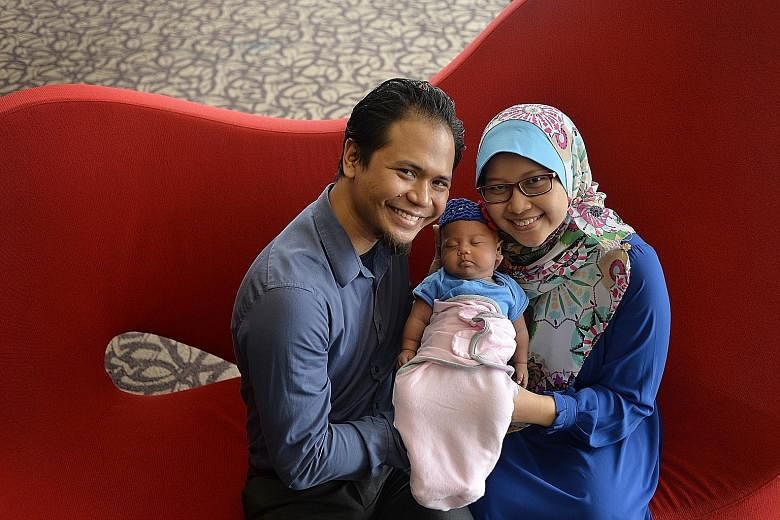A team of doctors at the National University Hospital (NUH) Women's Centre successfully restored a cancer patient's ability to conceive naturally by preserving part of her ovarian tissue and implanting it back after she recovered from cancer.
The process known as ovarian tissue cryopreservation enabled Madam Siti Nurjannah, 32, to conceive her first child, who was born in May this year.
Baby Hannah is reportedly one of only 21 babies conceived naturally and born worldwide following ovarian tissue cryopreservation. Hers is also the first such birth reported in Asia.
Madam Siti was first diagnosed with synovial sarcoma of the thigh in 2009, a rare cancer that affects soft tissue like muscles and nerves.
She was just 26 at the time, and two months away from getting married. Doctors told her that chemotherapy might render her infertile.
"I was devastated and shocked," said Madam Siti. "It was like receiving two diagnoses at once - cancer and infertility."
"It was really challenging for us, because we had plans for three children, and everything had to be put on hold," said Madam Siti's husband, Mr Raihan Haji Rajin, 32, a primary school teacher.
But rather than give up on her dreams of having children, Madam Siti turned to Dr Anupriya Agarwal, a consultant at NUH Women's Centre's Department of Obstetrics & Gynaecology.
Dr Agarwal had discussions with Madam Siti's oncologist, Dr Andrea Wong. They talked about how best to preserve her fertility before starting her cancer treatment.
"While ovarian tissue cryopreservation is not a common method of treatment, it was my best possible chance of having children in the future," said Madam Siti, a former primary school teacher.
In-vitro fertilisation, a process which requires a married status, was not an option, as Madam Siti was engaged but not married then.
After her cancer treatment, hormonal blood tests confirmed that Madam Siti was menopausal, and she was started on hormone replacement therapy.
In March 2013, Madam Siti was deemed cured as she had passed the five-year cancer-free mark. Her preserved ovarian tissue was then re-implanted.
Three months after the procedure, Madam Siti's menstrual cycle returned. By October 2014, she was pregnant with her first child.
"She woke me up one morning and showed me the pregnancy test... It wasn't until we saw the sonogram that we really believed it," said Mr Raihan.
"It has been such a roller coaster ride. Hannah is the first grandchild and it was really long-awaited by the family," said Madam Siti. "She really is a miracle baby."

